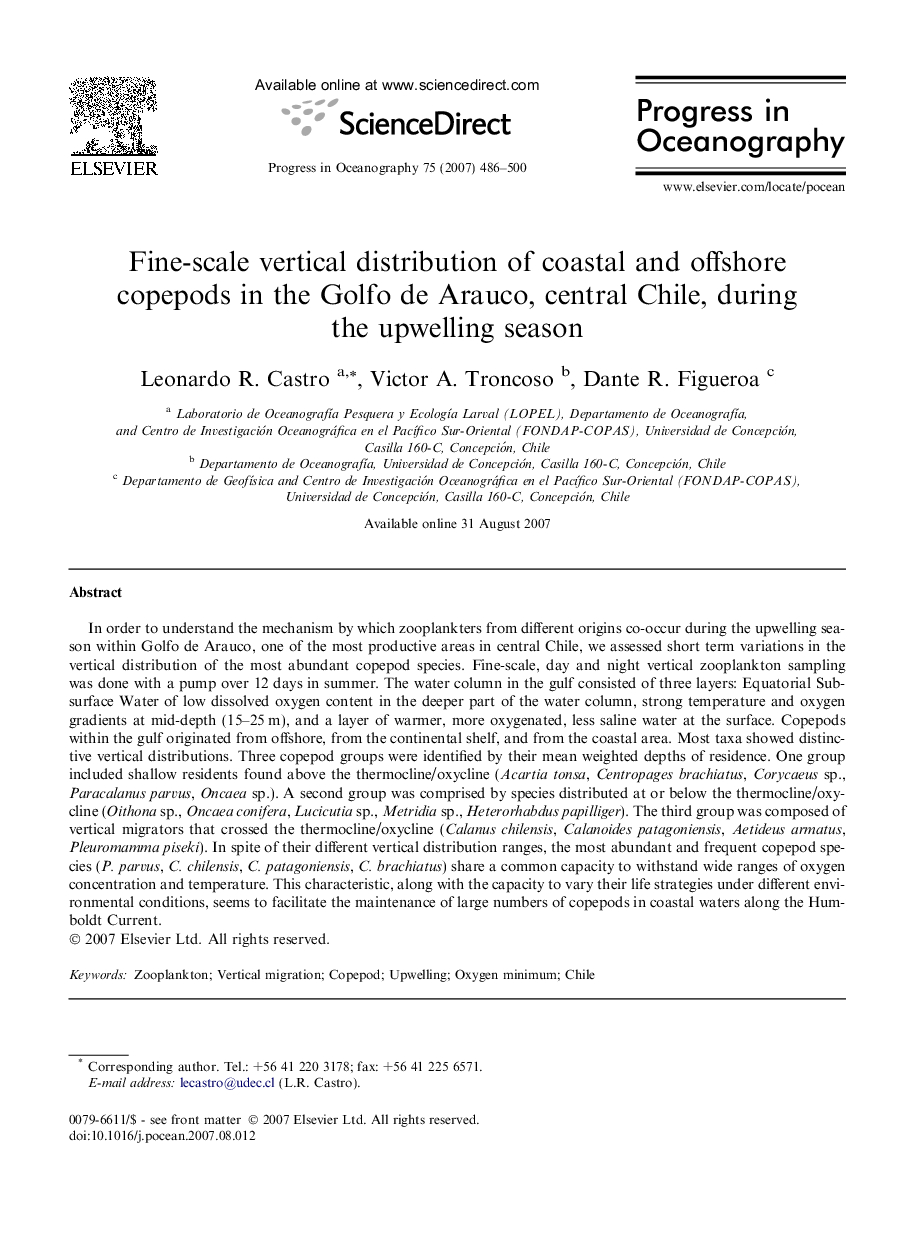| کد مقاله | کد نشریه | سال انتشار | مقاله انگلیسی | نسخه تمام متن |
|---|---|---|---|---|
| 4553797 | 1328931 | 2007 | 15 صفحه PDF | دانلود رایگان |

In order to understand the mechanism by which zooplankters from different origins co-occur during the upwelling season within Golfo de Arauco, one of the most productive areas in central Chile, we assessed short term variations in the vertical distribution of the most abundant copepod species. Fine-scale, day and night vertical zooplankton sampling was done with a pump over 12 days in summer. The water column in the gulf consisted of three layers: Equatorial Subsurface Water of low dissolved oxygen content in the deeper part of the water column, strong temperature and oxygen gradients at mid-depth (15–25 m), and a layer of warmer, more oxygenated, less saline water at the surface. Copepods within the gulf originated from offshore, from the continental shelf, and from the coastal area. Most taxa showed distinctive vertical distributions. Three copepod groups were identified by their mean weighted depths of residence. One group included shallow residents found above the thermocline/oxycline (Acartia tonsa, Centropages brachiatus, Corycaeus sp., Paracalanus parvus, Oncaea sp.). A second group was comprised by species distributed at or below the thermocline/oxycline (Oithona sp., Oncaea conifera, Lucicutia sp., Metridia sp., Heterorhabdus papilliger). The third group was composed of vertical migrators that crossed the thermocline/oxycline (Calanus chilensis, Calanoides patagoniensis, Aetideus armatus, Pleuromamma piseki). In spite of their different vertical distribution ranges, the most abundant and frequent copepod species (P. parvus, C. chilensis, C. patagoniensis, C. brachiatus) share a common capacity to withstand wide ranges of oxygen concentration and temperature. This characteristic, along with the capacity to vary their life strategies under different environmental conditions, seems to facilitate the maintenance of large numbers of copepods in coastal waters along the Humboldt Current.
Journal: Progress in Oceanography - Volume 75, Issue 3, November 2007, Pages 486–500